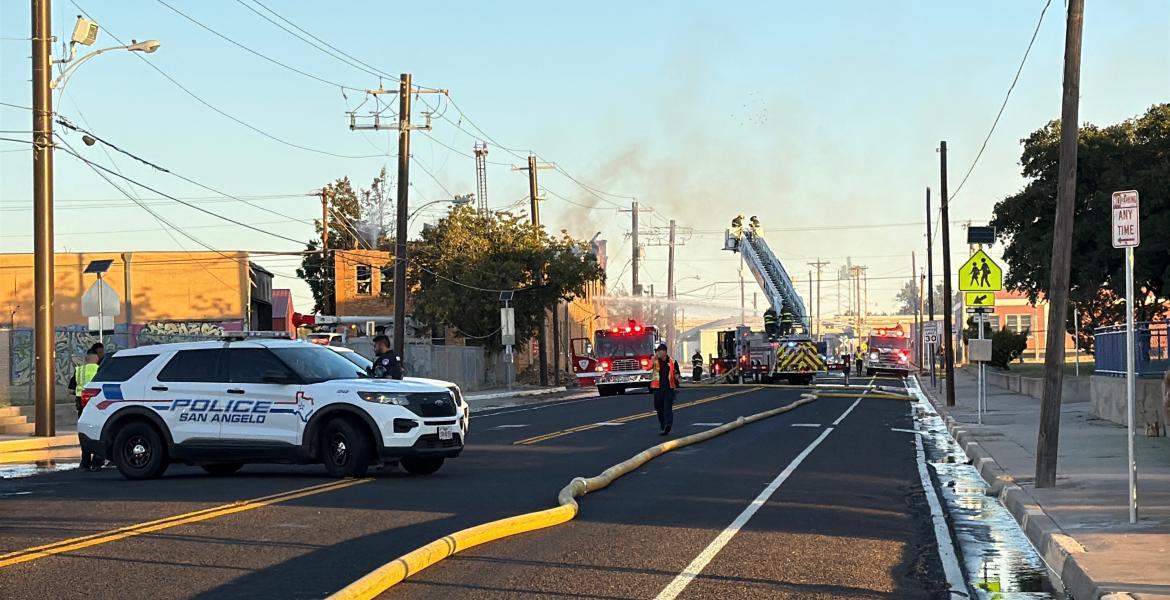Dr. Luis H. Zayas, Dean of the School of Social Work at the University of Texas at Austin and the Robert Lee Sutherland Chair in Mental Health and Social Policy, has more than 35 years of experience in mental health, clinical practice, research and more. That research includes the suicide attempts of young Latinas, a topic he became interested in as a young man in New York, and a topic not many mental health experts have delved into; however, that’s something Zayas said he hopes to change.
“What we don’t have are interventions to reduce the attempts or even how to handle it once a girl attempts,” explained Dr. Zayas. “We have some young scholars around the country, in the northeast and here in Texas who are paying attention to that; and we hope in the next few years, they’ll come out with ways to intervene. If we can get media attention, that’s the first step.”
Dr. Zayas had both the media’s attention and the City of San Angelo’s attention this past Friday during his presentation “Why Do Young Latinas Attempt Suicide So Often?” at the San Angelo Texas Exes, which was held at the Angelo State University LeGrand Alumni and Visitor’s Center, 1620 University Avenue.
About 170 people, including San Angelo Police officers, officials from the San Angelo Fire Department, City Council members, the Chamber of Commerce, Knights of Columbus, local churches and Mayor Dwain Morrison listened as Zayas explained a topic many people in the Latino culture, or in general, are uncomfortable speaking about. It’s also a topic many people don’t know about.
“This is a topic that’s not very comfortable to talk about, but it’s necessary,” said Joe Muñoz, senior executive assistant to the president and general counsel at ASU, during his introduction of Zayas.
How the Research Started
Dr. Zayas said this topic struck him when he was a younger man back in the mid 1970s in New York City at the clinics he worked at in East Harlem and the Bronx.
“On Monday mornings, I’d come in and hear about the X number of mostly Puerto Rican girls coming into our emergency room who made suicide attempts,” he said. “It really struck me, and I asked, ‘What was going on?’”
Zayas said he contacted other area clinics and hospitals to see if his colleagues were witnessing the same thing, and they responded, “Yes.” However, they only had “homespun theories” and nothing more.
“So we weren’t sure if this was unique. It was definitely troubling, but we weren’t sure. At first, we thought it was a ‘Puerto Rican’ phase,” Zayas stated.
At that time, Puerto Ricans were the largest Latino group in the region, but reports of the same issue among the other Latin American groups proved this was a bigger problem, so Zayas pursued the topic for 15 years. However, his research lagged because of a lack of public health attention on this topic until the 1990s when the Centers for Controlled Disease launched its Youth Risk Behavior Surveillance System in 1991.
Zayas said the 1991 CDC report finally confirmed the things he had been researching and had been concerned about.
The Statistics of Attempted Suicides
Zayas said although he thought this topic to be a new phenomenon, he found literature that suggests this problem began in the late 1950s.
In a study by an expert from the South Bronx in the 1960s, a group of Puerto Rican women were evaluated. The expert referred to the aspect of that study as the “Suicidal Fit.” These women wanted an impulsive escape from stressful situations, and they either ingested pills or household cleaners. There were also family disturbances with a spouse or mother. These women claimed they had no thought of death and were unaware of their thoughts. The expert also found there were no psychotic symptoms.
Zayas noted, “They were normal everyday women.”
Zayas pointed out that poverty played a role in these attempts, which continues to be a factor today, as well as culture; and from 1991 to 2013, Latina girls have consistently maintained the highest rate of attempted suicides.
“We see that in 1995, the most troubling year of all, that 1 in 5 Hispanic girls in high school reported a suicide attempt in the proceeding 12 months,” Zayas explained.
The majority of the girls who do attempt suicide are American born. The Substance Abuse Mental Health Services Administration’s National Household Survey on Drug Abuse in 2003 showed that Latinas, ages 12-17, have a higher rate of attempted suicide, and U.S. born Latinas are more likely to attempt it than foreign-born.
“We also learned that it’s young girls in smaller metropolitan areas who attempt suicide as well,” Zayas noted.
Based on the most recent report in 2013, Zayas stated that the suicide attempts started with sadness and hopelessness.
“Almost 50 percent of Latina girls reported that they were depressed,” Zayas said. “When we add the boys, we’re still at a higher rate than non-Hispanics.”
Other factors included the following:
- 26 percent of Latina females seriously considered suicide;
- 20 percent of Latina females made a suicide plan;
- 15.5 percent Latina females attempted suicide;
- Latinas in Puerto Rico had the highest rate of attempted suicides; the lowest rate was in Illinois.
Zayas said to begin to change the statistics, this problem has to be addressed in the middle school years.
“That’s really when puberty is starting, and when kids are moving towards greater independence,” he said.
Hispanic Familismo and the Issue of Communication
Zayas explained that within the Hispanic psyche is the family. There’s a centrality of family in both the culture and everyday life, and many young Latinas feel an individual obligation to the family, so that affects their personal identity.
“It’s natural for kids to feel more familiastic,” Zayas stated.
Also, there’s a strict interaction between parent and child. Many parents, especially mothers, have strong expectations of the girls within the family. The girls have a lot more responsibility and have to be the dutiful daughter while the boys in the family have less responsibility and can go do what they wish.
Not to mention, many young Latinas have a harder time communicating with their mothers; therefore, there’s more internalizing of emotions. This issue with communication can cause more stressors on young Latinas because they don’t feel they can go to their mothers with their problems. Of course, that’s something that parents have to be willing to change to fix this issue.
“If you talk to your daughter, you begin to reduce the chance of attempted suicide by 50 percent,” Zayas said. “It’s important to get parents and kids talking to each other.”
Rebuilding family rituals, which includes changing the way parents and mothers communicate with their girls, and how the family connects with one another, will help young Latinas establish their identities. By doing this, there will be less emotional distress, Zayas explained.
Why it Matters
Dr. Zayas said this topic matters because of the growing rate of the Latino/a population in the U.S. that includes native born over multiple generations and the newcomers. These are the children who are going to take on the roles of the future.
“It’s something we should be concerned about,” Zayas said. “They are going to be the ones leading our communities, so we have to take care of them.”
Although this is a topic that affects all cultures, research in the past has failed to address important aspects.
“In the past, research didn’t include minority populations,” Zayas noted.
Zayas added that the focus of research was on adolescent and peer group effects, as well as on suicides rather than suicide attempts.
“The living are important people to tend to,” Zayas stated about that last factor.
Additionally, cultural, racial, or ethnic factors weren’t examined, and when dealing with Latinas, these are important because they are the primary cause of these attempts. To understand the cognitive, emotional and behavioral autonomies of adolescence, psychiatrists have to be able to identify individual key issues.
“We have to look child by child,” Zayas said.
Some Final Words
After the presentation, Zayas said presentations like this help shed light on this problem, and he hopes that helps. Getting this information out to the people who can help change things, including Latino families, is key.
“We have to keep this in the forefront, and not let it recede,” he said. “I think our public health authorities, our educators, our mental health authorities, and our communities need to come together and find these girls, the ones at risk, so that we begin to take steps to prevention. If we can prevent one attempt, chances are we’ll prevent a second attempt by that child.”
Zayas also said he hopes, with this information, young Latinas realize there’s much more to live for, and that they’re not the only ones dealing with hardships.
He said, “Families can be improved, and there are people in place who can help.”
Subscribe to the LIVE! Daily
Required






Post a comment to this article here: